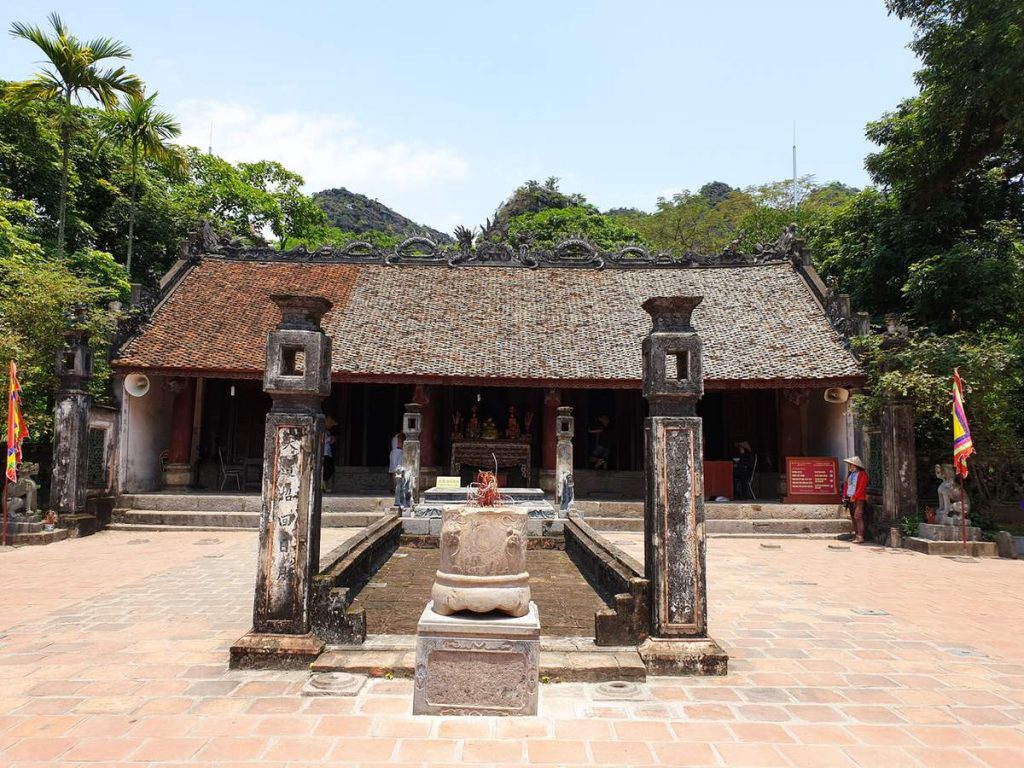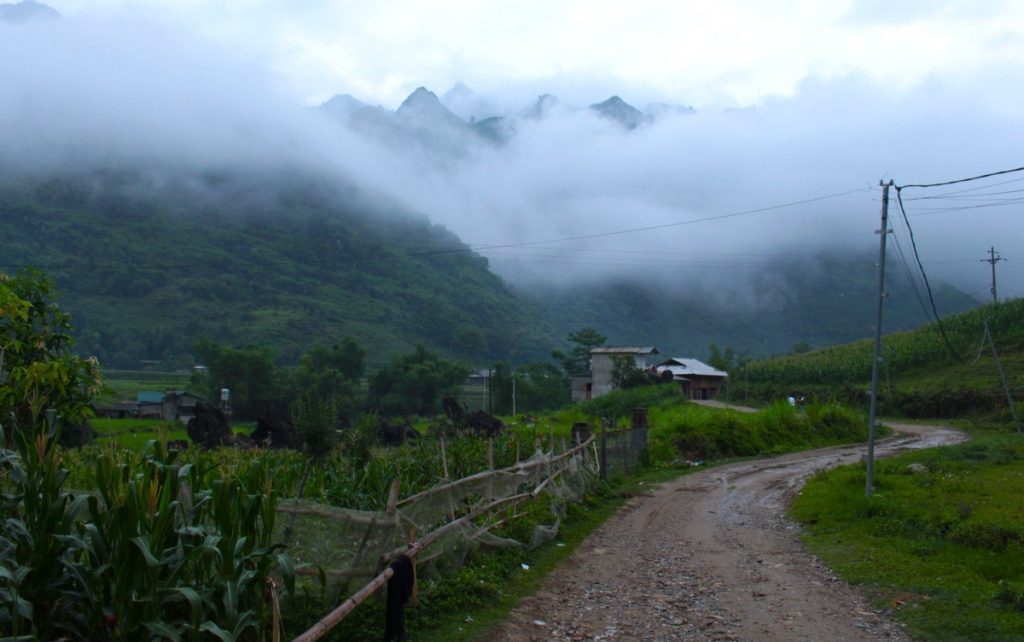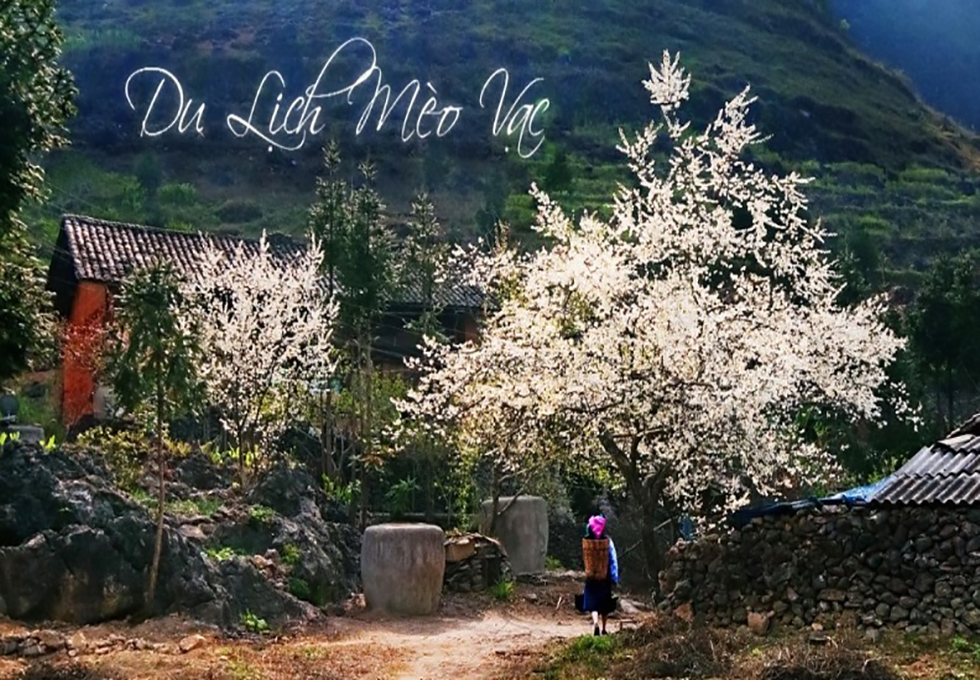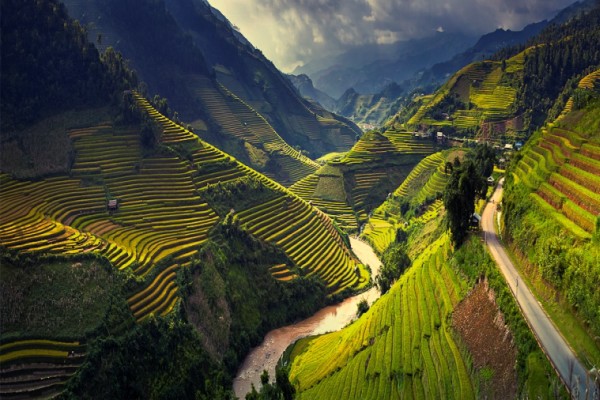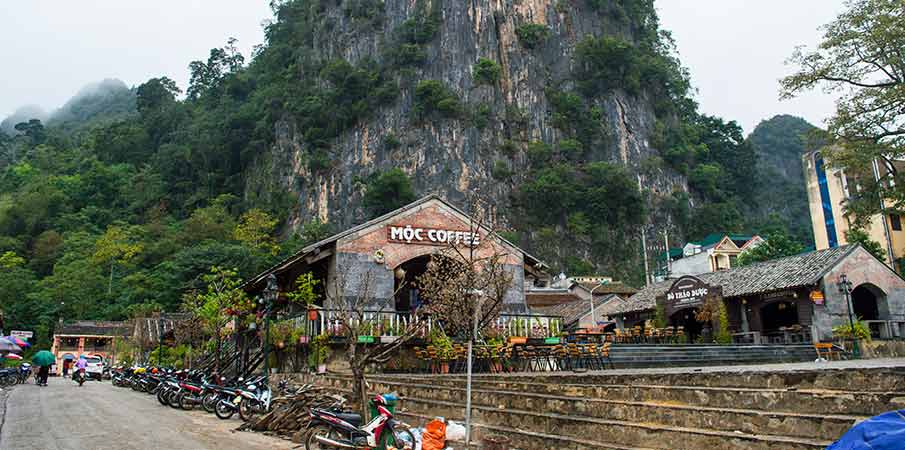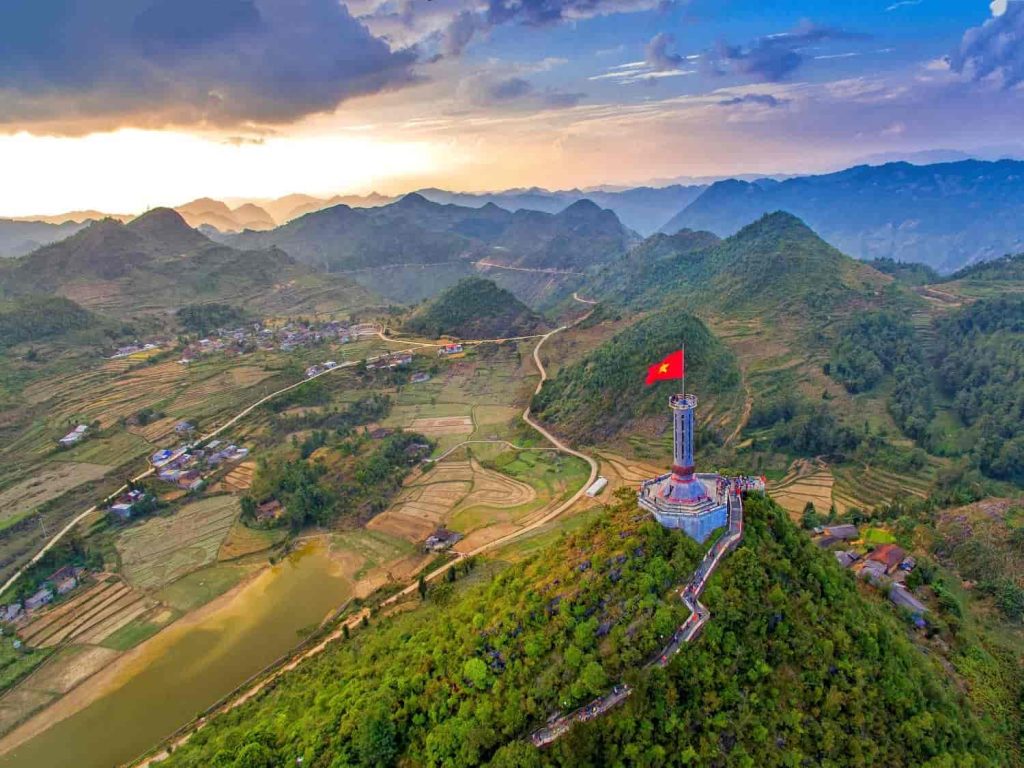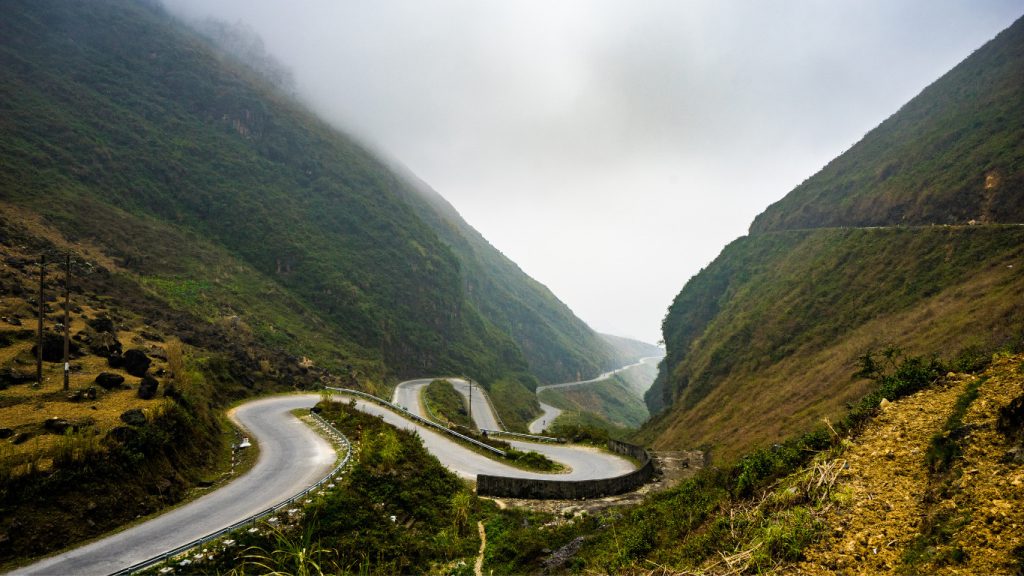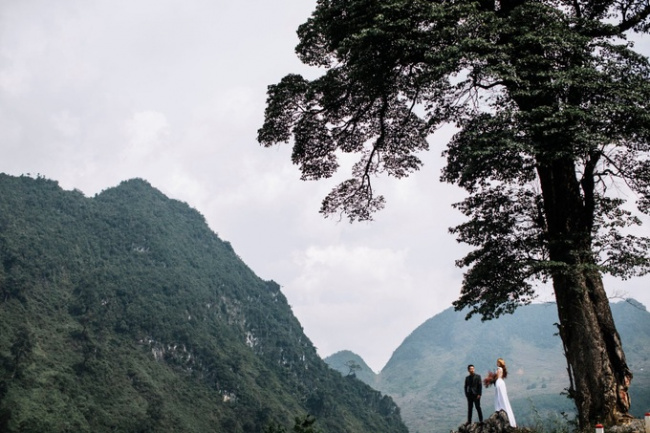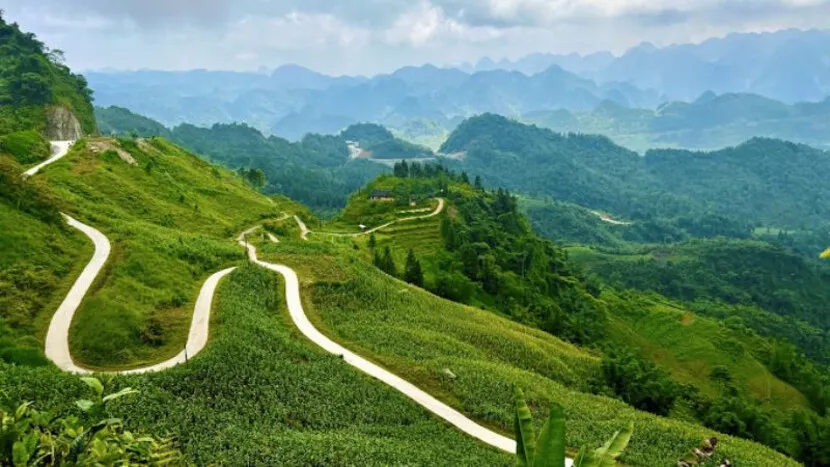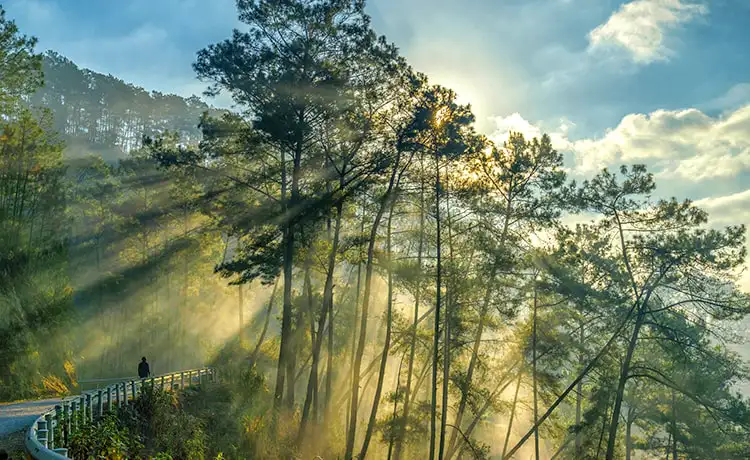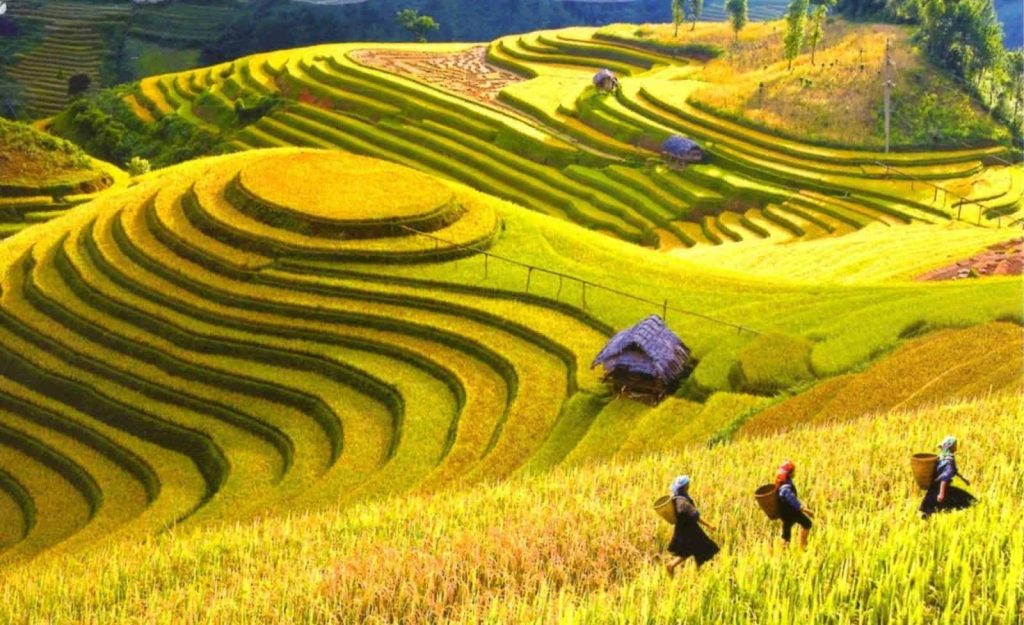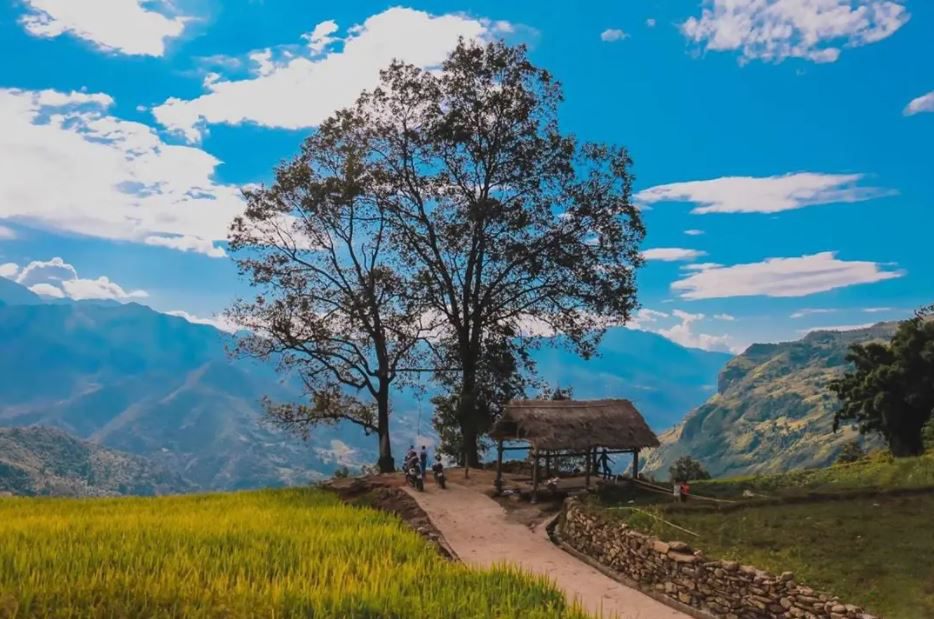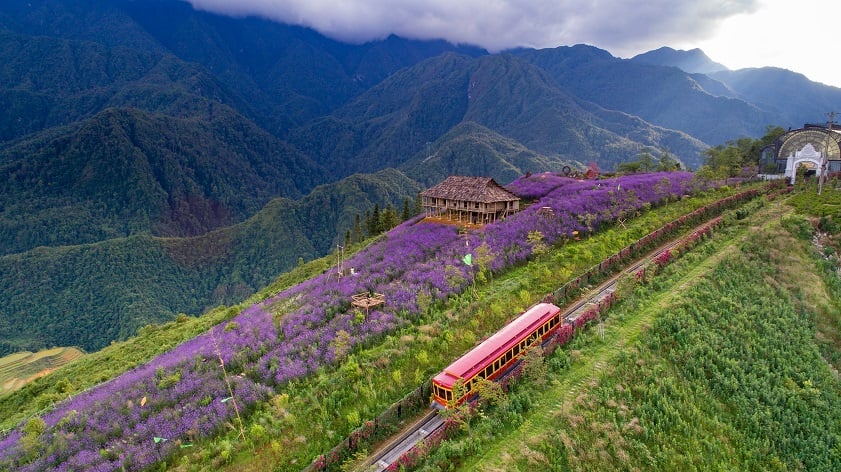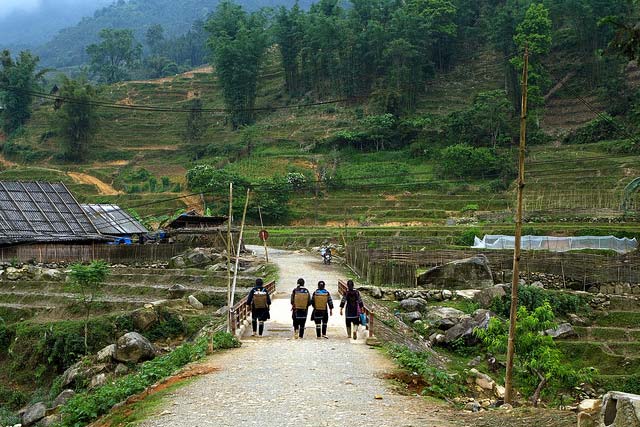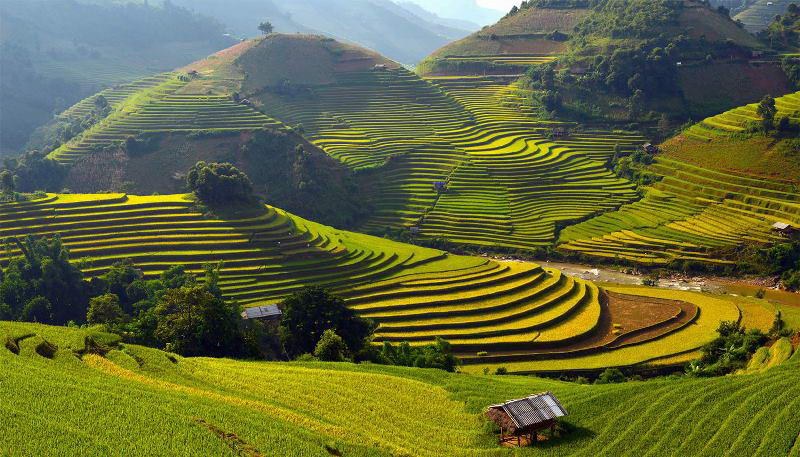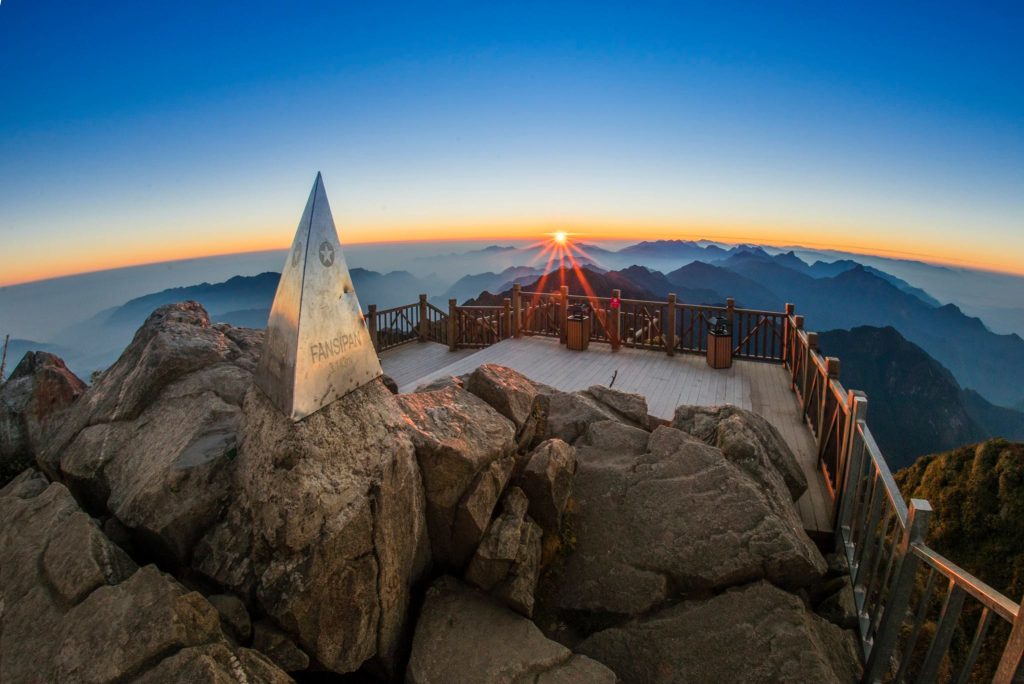The Nho Que River – Natural splendor of Ha Giang
The Nho Que River, located in the remote northern region of Vietnam, is renowned for its breathtaking beauty and pristine waters. Originating from the peaks of the Ha Giang mountains near the Chinese border, the river winds through deep valleys and karst limestone formations, creating stunning landscapes along its path.
As the river flows southward, it carves through the Ma Pi Leng Pass, known for its rugged cliffs and dramatic scenery. The Nho Que River then meanders through the Dong Van Karst Plateau Geopark, a UNESCO Global Geopark celebrated for its geological diversity and cultural significance.
Visitors to the Nho Que River can enjoy boat rides along its turquoise waters, offering unparalleled views of towering cliffs and lush greenery. The area is also popular among adventure seekers for trekking, exploring ethnic minority villages, and witnessing sunrise or sunset over the picturesque river valley.
The Nho Que River exemplifies Vietnam’s natural splendor and remains a hidden gem awaiting discovery by travelers seeking unspoiled landscapes and cultural encounters.
I. When is the best time to visit the Nho Que River?
The best time to visit the Nho Que River in Ha Giang Province, Northern Vietnam, is during the dry season, which typically spans from October to April. This period offers favorable weather conditions with lower chances of rainfall, making it ideal for exploring and enjoying the scenic beauty of the river and surrounding landscapes.
– October to November: After the rainy season, the weather is cooler, and the landscapes are lush and green, providing excellent conditions for trekking and outdoor activities.
– March to April: These months also offer pleasant weather with blooming flowers and clearer skies, enhancing the beauty of the river and its surroundings.
During the dry season, the Nho Que River’s turquoise waters are more vibrant, providing a stunning contrast against the karst limestone cliffs and verdant hillsides. Boat trips along the river during this time offer breathtaking views and opportunities to explore hidden caves and natural formations.
It’s advisable to avoid the peak rainy season (June to September) when the river can swell and access may be more challenging due to potential landslides or flooding in the mountainous terrain.
Plan your visit to the Nho Que River during the dry season to make the most of the natural splendor and outdoor activities this pristine area has to offer.
II. What to do in the Nho Que River?
Visiting the Nho Que River in Ha Giang Province offers a range of captivating activities for travelers seeking to immerse themselves in its natural beauty and cultural richness:
- Boat Trips: Explore the stunning turquoise waters of the Nho Que River on a boat trip. Navigate through the river’s meandering path, passing by towering limestone cliffs and lush greenery. Boat rides provide an up-close view of the river’s beauty and are perfect for photography enthusiasts.
- Scenic Views: Take in the panoramic views from the Ma Pi Leng Pass, which offers some of the most spectacular vistas of the Nho Que River and the surrounding karst landscapes. The pass is renowned for its steep cliffs and is a must-visit spot for breathtaking views.
- Trekking and Hiking: Embark on trekking or hiking adventures along the banks of the Nho Que River. Explore trails that lead to viewpoints overlooking the river valley and immerse yourself in the serene nature of Ha Giang Province.
- Cultural Exploration: Visit nearby ethnic minority villages to learn about the local culture and way of life. Experience traditional customs, taste local cuisine, and interact with villagers to gain insights into their daily lives.
- Photography: Capture the natural beauty of the Nho Que River and its surroundings. From the turquoise waters and dramatic cliffs to the vibrant green hillsides, the area offers endless opportunities for stunning photographs.
- Relaxation and Nature Appreciation: Simply unwind and enjoy the peaceful ambiance of the river. Listen to the soothing sounds of nature and appreciate the untouched landscapes that make the Nho Que River a hidden gem in Vietnam.
- Adventurous Activities: For adrenaline seekers, consider activities like rock climbing or exploring nearby caves and waterfalls, which are often accessible from the Nho Que River area.
Visiting the Nho Que River promises a memorable experience, combining natural beauty with cultural exploration and outdoor adventure. Whether you prefer relaxing boat rides, scenic hikes, or cultural encounters, the river offers something for every traveler to enjoy.
III. How to get to the Nho Que River?
To get to the Nho Que River in Ha Giang Province, Northern Vietnam, you can follow these general steps:
- Travel to Ha Giang City:
– From Hanoi: The most common starting point is Hanoi. You can take a bus from My Dinh or Giap Bat bus station in Hanoi to Ha Giang City. The journey takes approximately 6-7 hours by bus.
- From Ha Giang City to Meo Vac:
– Upon reaching Ha Giang City, you will need to travel to Meo Vac District, where the Nho Que River and Ma Pi Leng Pass are located. Meo Vac is about 170 kilometers north of Ha Giang City and typically takes around 4-5 hours by local bus or private transport.
- Transport Options to Nho Que River:
– Motorbike or Car: Many travelers opt to rent a motorbike or hire a car with a driver in Ha Giang City to explore the region independently. The road from Ha Giang to Meo Vac offers stunning views and is part of the adventure.
– Local Bus: There are local buses that run between Ha Giang City and Meo Vac. These buses can be crowded and may take longer due to frequent stops.
- Arrival at Nho Que River: Once you reach Meo Vac, you can arrange transport to specific viewpoints or areas along the Nho Que River. The Ma Pi Leng Pass is a highlight, offering panoramic views of the river and surrounding landscapes.
- Exploring the Area: From Meo Vac, you can explore the Nho Que River by hiring a boat for a river cruise or by trekking along its banks to enjoy the natural beauty and serene atmosphere.
It’s advisable to plan your transportation ahead of time, especially if you prefer more comfort or flexibility. Local accommodations and tour operators in Ha Giang City can also assist with arranging transportation to the Nho Que River and nearby attractions.
If you need more information, please contact us Mail: zgotravelvietnam@gmail.com or WhatsApp: +84 9766 09451.
By the way, a new beautiful place called Ha Giang loop which is very interesting, check this out: https://www.getyourguide.com/hanoi-l205/from-hanoi-3-day-ha-giang-loop-small-group-t739208
For Lan Ha Bay & Halong Bay trip, check this out: https://www.getyourguide.com/ha-long-l119790/from-ha-noi-2-day-lan-ha-ha-long-bay-5star-with-balcony-t739040/
Or https://www.tripadvisor.com/AttractionProductReview-g3737857-d28097153-Lan_Ha_Bay_Ha_Long_Bay_5_Stars_Private_balcony_2_days_trip-Tuan_Chau_Island_Halon.html

